With scientists and mayors in the Pyrenees

rom October 10th to the 14th, Anders Solheim and Hervé Vicari from NGI accompanied by Didier Verges from CTP, visited the NBS sites in the Pyrenees which aim to reduce the risk from snow avalanches, erosion, rockfall, and debris flows. The NBS interventions were in different stages of completion, from completed to “just about to start”, but all will be completed in 2022.
Primarily due to the pandemic, no formal site visits had been conducted since June 2019, when the goal was to look at the sites where NBS interventions were planned prior to being proposed to and approved by the Steering Committee. Therefore, the current visit was to inspect the sites during or after the implementation of the various NBS. The inspection gave a very detailed insight into the various interventions.
Capet Forest (snow avalanches)
The top photo is from the visit at the Capet site, with the mayors of Baréges and Sers in the back.
ONF, the French public forest administration, is responsible for this site, and the visit was led by Laurent Lespine from ONF. The Mayors of the Bareges and Sers municipalities also participated in the visit, clearly demonstrating the local interest in the project. The measures of planted trees protected by wooden tripods in the release area of avalanches are completed and will eventually function together with the existing ‘grey’ measures.
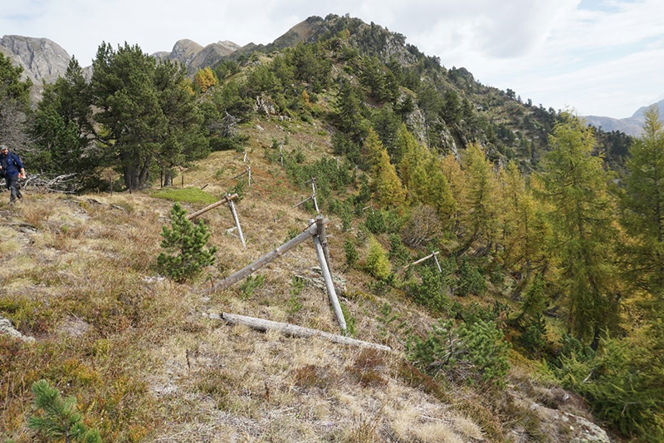
Tripods to protect plants at Capet
Artouste (Rockfall)
The interventions at both the Artouste and St. Elena sites are proposed and organized by the ‘European Grouping of Territorial Cooperation for the Pyrenees; EGTC Pireneos’, and the visit at both sites were led by Santiago Fabregas. At Artouste, traditional rockfall nets are mounted above the road in one part of the slope, whereas the proposed NBS interventions are to be implemented at another location on the slope.
Currently, potential sources for rockfall, ledges, and individual rocks are mapped and marked according to the NBS measure selected for that specific rock or ledge. The implementation of the measures is being conducted in parallel with experimental set-ups, which comprise an indoor facility in Jaca, Spain, and a full-scale field site near Artouste. Together these facilities will form an important ‘laboratory’ for rock fall prevention measures.
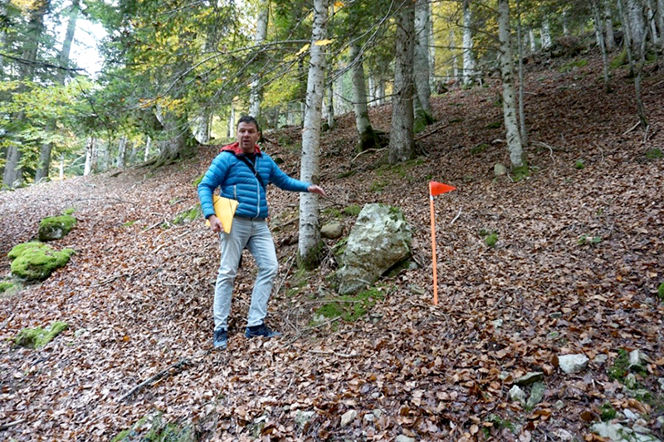
Santiago Fabregas points at a loose rock at Artouste
St. Elena (Erosion and rockfall)
The implementation of the proposed measures at St. Elena was roughly 65% completed during the visit. The construction consists of a base dry masonry stone wall, followed by 11 terraces built up of wood and filled with the local till and organic soil.
The terraces are then to be planted with local species of bushes and trees, with roots that provide deep anchoring. During the visit, 7 of 11 terraces were built. Completion is expected by the end of November 2022.
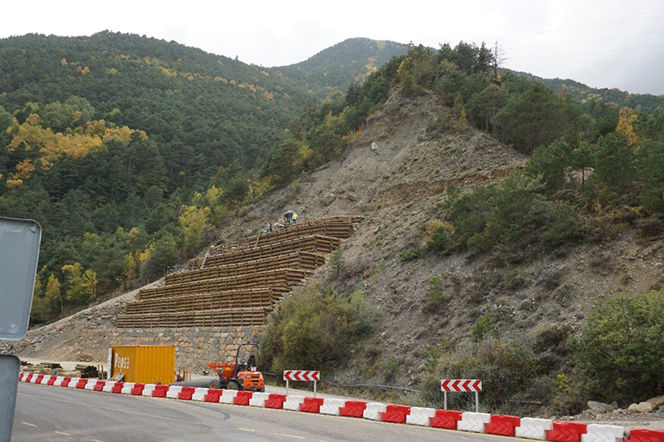
The measures at St. Elena
Erill-La-Vall (Erosion and debris flows)
The Vall de Bois municipality and the Government of Catalonia are responsible for the site. Carles Raïmat, who completed his Ph.D. on debris flows at this site, is responsible for the detailed design and led the field visit. The NBS interventions at this site are to reduce erosion in the thick till deposits (lateral moraine), which feed debris flows during periods of heavy precipitation. The till slope is relatively stable in dry conditions, but very steep, and largely unstable during wet conditions.
The measures consist of terraces built partly of local rocks and partly of logs, both meant to break energy and stabilize the slope. The terraces will also be accompanied by a downslope debris flow net (not financed for by PHUSICOS) to raise the erosional base in the slope. The site has been monitored by instrumentation sensors for about 15 years, so there are abundant baseline data for comparison with future monitoring.
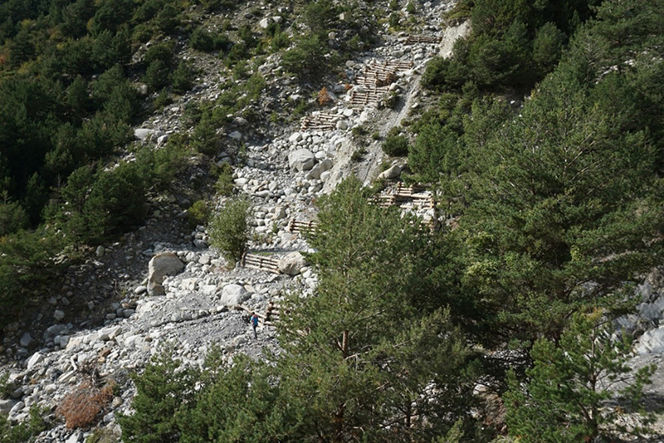
Some of the measures at Erill-la-Vall
Old NBS interventions at Canfranc
Although NBS as an umbrella concept is relatively new, vegetation and green infrastructure are not new. This was evident during a visit to Canfranc in Spain. At the beginning of the 20th century, 500 persons worked in this area for a period of 10 years to implement measures to protect the Canfranc railway station.
Large infrastructures of dry stone walls were initially constructed, partly also to support paths for people and transport of equipment by horses and donkeys. Following this, several million trees of more than 20 species were planted on the slopes primarily as snow avalanche protection.
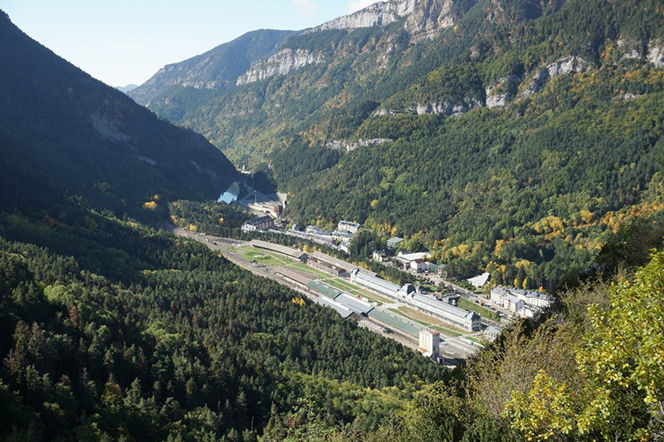
Reforested slopes around the Canfranc railway station
The railway station has an interesting history in itself (e.g. https://en.wikipedia.org/wiki/Canfranc_International_railway_station).
News item prepared by
Anders Solheim, NGI, anders.solheim@ngi.no